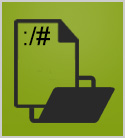Work on the Command Line - start the course
- perform single line shell commands and command sequences
- use and modify the shell environment
- use and modify the shell environment by defining, referencing, and exporting environment variables
- use and edit the history of the Bourne-again Shell (bash)
- use commands in the shell that are defined inside, and outside, the defined path
Perform Basic File Management - use shell commands to copy, move, and remove individual files
- use shell commands to copy, move, and remove individual directories
- use a single shell command to copy multiple files
- use a single shell command to copy directories, and their sub-directories, recursively
- apply wildcards to shell commands to filter files or directories that should be included
- use the find command to locate and act on files based on the file type, size, or time
- use commands to compress and decompress files
- use the tape archive, or tar, command to create and extract archived files and use the built-in gzip or bzip2 parameter to compress or decompress the archive
- describe how and when to use cpio to copy archives and dd to make and write image files
Use Streams, Pipes, and Redirects - describe how standard input, or stdin; standard output, or stdout; and standard error, or stderr, can be used to redirect output from a Shell command
- use pipes to direct the output of one command to the input of another command
- use the output of one command as arguments to another command
- use tee or redirection to send the output of a single command to the standard output, or stdout, and a file
Perform Basic File Editing Operations using VI - use VI to open or create a document and move around within the document without using a GUI interface
- use the basic VI modes to insert, add, and delete characters from a document as well as add lines to the document
- use the VI commands to exit, cancel changes, and save changes to a document
- use advanced features of VI to copy, paste, substitute, and move characters or lines within a document
- use the search capability of VI to find text, and describe the basic use of patterns in searches
Practice: GNU and Unix Commands - navigate and search files using GNU and Unix commands
|


